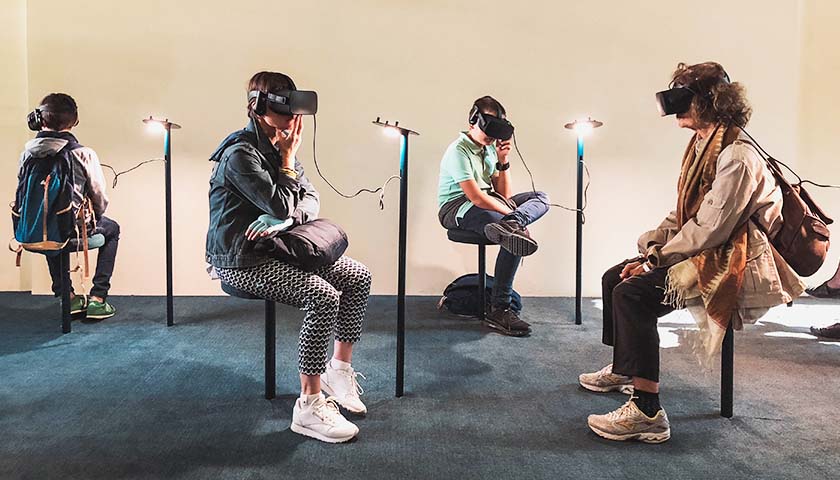by Ross Pomeroy
The tandem rise of autonomous driving and virtual reality has the potential to revolutionize modern life. At the same time, however, the technologies could introduce an epidemic of motion sickness.
This disconcerting prospect inspired Behrang Keshavarz, an Assistant Professor of Psychology at Ryerson University in Canada, and John Golding, a Professor of Psychology at the University of Westminster in the U.K., to review currently available research and, in an article recently published to the journal Current Opinion in Neurology, summarize why motion sickness occurs, who is susceptible, and what can be done about it.
Up to 46% of adults report occasionally experiencing motion sickness as passengers in cars, often exacerbated by activities like reading a book or using a handheld device, which take passengers’ eyes off their moving outdoor surroundings. As not having to pay attention to the road is one of the key benefits of autonomous vehicles, motion sickness could imperil its use.
In regards to virtual reality (VR), an analysis found that up to 60% of VR sessions in lab-settings are ended early due to symptoms of motion sickness, a statistic that might make VR evangelist and Meta CEO Mark Zuckerberg ill. These symptoms can include nausea, vomiting, disorientation, sweating, fatigue, and headache.
Motion sickness is thought to be triggered by a “mismatch between the information delivered by the visual, vestibular, and/or somatosensory system that is not in accordance with the movement predicted by a cortical, internal model,” Keshavarz and Golding write. Reading while sitting in a moving car prompts this discordance, for example, or playing a game with a VR headset in which your body is mostly stationary but your visual environment is changing rapidly.
Research has shown that children aged six to nine are generally most susceptible to motion sickness in vehicles, but they seem to avoid motion sickness from virtual reality. For VR, adults younger than 35 and older than 65 seem to be more at risk from motion sickness, though the available research is pretty shoddy. Women appear to suffer slightly higher rates of motion sickness than men.
A variety of drugs can counter motion sickness, but can have unwanted side effects such as fatigue or drowsiness. The most effective countermeasure overall seems to be habituation. Repeated exposure to VR tends to result in reduced motion sickness, a process that some VR proponents have likened to “getting your sea legs.”
“However, full habituation can be time-consuming and unpleasant for the user, making it not the most practical solution,” Keshavarz and Golding note. Moreover, not everyone does get accustomed to it.
In a hypothetical, futuristic world filled with autonomous vehicles where citizens work and play in the VR metaverse, there may need to be a better solution to the problem of motion sickness.
Source: Keshavarz, Behrang; Golding, John F. Motion sickness, Current Opinion in Neurology: November 26, 2021 – Volume – Issue – doi: 10.1097/WCO.0000000000001018
– – –
Ross Pomeroy is a contributor to RealClearScience.




